 APPENDIX
APPENDIX 
How to Obtain Mah Jongg Cards
New cards are available from the National Mah Jongg League. When you request a card, you are automatically enrolled as a League member.
National Mah Jongg League
250 West 57th Street
New York, NY 10107
Telephone: 1 (212) 246-3052
Website: www.nationalmahjonggleague.org
New cards are available from the American Mah-Jongg Association.
American Mah-Jongg Association
8605 Snowreath Road
Baltimore, MD 21208
Telephone: 1 (800) 663-4581
Website: www.amja.net
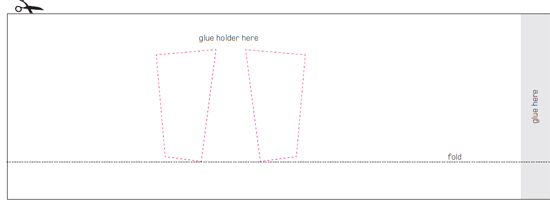
Use this template to make the racks you need to begin play mah jongg today! Thicker stock paper works best.
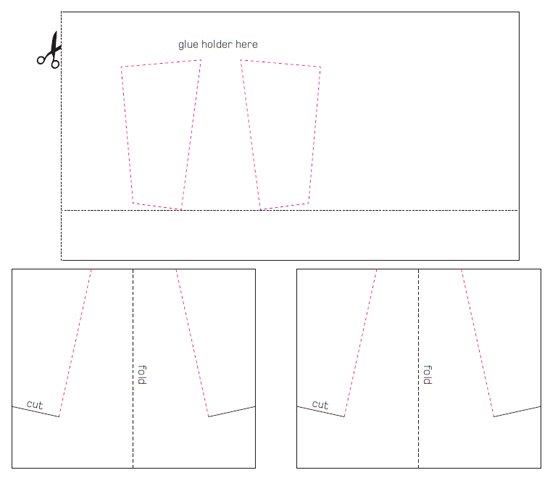
* To download the template, please click HERE.
 CHAPTER 1
CHAPTER 1 
What Is Mah Jongg? Introduction to the Game

T wo-Crak, Flower, nine-Dot, Red, Take. No, its not some coded message from outer space. Its mah jongg, the game my mom, and maybe yours, played, lo, these many years ago. I can still hear the clatter and click of the tiles, somebody calling Mah Jongg! and the Ooohs and Aaahs that followed, the buzz and the laughter. And I have fond memories of raiding the fridge the next day to enjoy the leftover goodies. Today, its still the same. People are playing mah jongg, buzzing and laughing and having fun!
I am always amused to hear people pooh-poohing mah jongg with the stereotypical phrase that its an old ladys game. One of my students was a typical example. My mom used to play mah jongg two or three times a week. She played for 30 years with the same friends and I could never understand why. That is, until she took her first lesson. She realized mah jongg is definitely not an old ladys game, but what an interesting and challenging game it is.
Why do so many people love the game? The answer, primarily, is its fun! Its simple and at the same time complex. Its competitive: you play against three other people. Its sociable: people play for hours, they eat, they talk, and they laugh. There are groups of players that have been together for decades. It takes thinking: figuring out the best plan for your individual hand, deciding how to keep others from winning, and using appropriate strategies. Its not called The Game of a Thousand Intelligences for nothing. Its relaxing: it allows people to focus on something completely unrelated to everyday concerns. And its thrilling: theres nothing more exciting than when, with your heart racing, your adrenaline pumping and your palms sweating, you call Mah Jongg!
And on top of that, its non-fattening and its legal!
Families, friends, kids, clubs, parties, church groups, associations, on cruise ships, in tournaments, at vacation spasfolks play mah jongg like crazy, in almost every country you can think of, from China, Japan, and the Philippines, to Australia, Germany, Russia, and South Africa. Even though many countries have their own versions, including America, suffice it to say, the appeal of the game is undeniable and universal.
The popularity of mah jongg during the 1930s, 40s, and 50s was legendary. People from all walks of life and all parts of the country played it. With the demographic shift from city life to suburban life, the introduction of bridge, and the return to the work force by women, the popularity of mah jongg gradually faded. But today, the game of American mah jongg is making a huge comeback. Once you learn the fundamentals of the game and begin to play, you will understand why so many people love it.
So let me introduce you to mah jongg. Mah jongg originally came from China, and uses small rectangular tiles stamped with symbols and characters. The object of the game is to be the first to assemble combinations of these tiles into specific patterns that make up a hand. You assemble these combinations by picking and discarding tiles. Thats the game.
But, of course, actually playing the game is not that simple. Players of American mah jongg need a card of hands. You can see what a card looks like on page . Without one, you cant learn or play the game, because in order to win, a players hand must match a hand selected from the card. For learning purposes, well be using a card published by the National Mah Jongg League (NMJL). The NMJL is the organization that standardized the procedures and rules of the American game and this book is based upon those procedures and rules. Everyone who plays American mah jongg follows them.
Besides the NMJL, there are other mah jongg groups that publish their own cards, such as the American Mah-Jongg Association (AMJA). Once you understand the basic elements of a card and you learn to read it, you will be able to play with a card published by any other mah jongg association; they all use the same system. For further information about the NMJL or AMJA see the Appendix.
Unfortunately, you cannot learn to play mah jongg in an hour or two. It takes awhile. There are many new ideas and concepts, a lot of things you need to remember, particularly when you first begin, and a host of dos and donts. But as you learn the game and begin to play, things that may have seemed difficult soon become easy. Thats part of the fun of mah jongg.
Because learning to play the game requires a little time and a little patience, this guide is written in an easy, conversational style. It has lots of pictures, examples, hints, tips, summaries of important information, and relevant dos and donts, all designed to make your learning experience easy and fun. Absorb one or two parts of the game at a time, and take as much time as you need. For beginners, reading the book a second time may clear up many ideas that, at the first reading, were challenging. You may want to read through the entire book to get a feel for the game, then go back to the beginning and start the process of learning it.
 The Symbols of the Set
The Symbols of the Set 
Part of the fascination of mah jongg lies in the mah jongg set and the images engraved on the tiles. It is no surprise that the mah jongg tiles, coming from China, are rife with symbolism. Each tile in the set reflects some universal aspect of human nature, seen through the prism of Chinese life and culture. Lets examine a few.
In mah jongg, there are groups of tiles called Suits. In American mah jongg, one of the Suits is called Bams, representing the bamboo plant. The tiles are stamped with little bamboo twigs. Bamboo is the most versatile plant in China, used for building, food, writing implements, clothing, furniture, and a myriad of other things, including mah jongg tiles. Because bamboo is so important in Chinese life and culture, its represented in the set and is symbolic of strength, service, versatility, and usefulness.
Interestingly, the first tile of the Bam Suit is stamped with an image not of a bamboo twig, but of a bird, usually a peacock. In some older sets, the birds are sometimes shown soaring; there are also sparrow sets, in which the bird is perched on a bamboo stalk. These sparrow sets can be seen as a reference to the name mah jongg, sometimes interpreted as The Game of Sparrows.


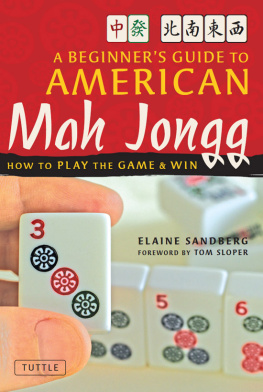


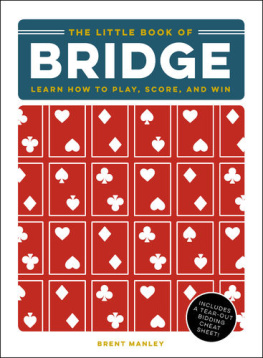
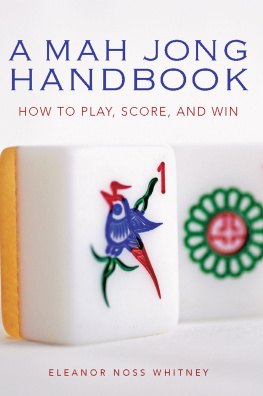
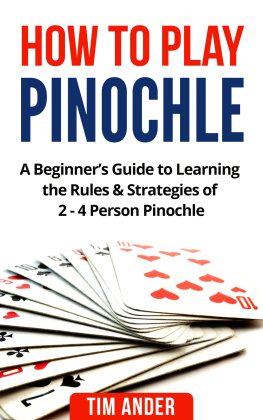

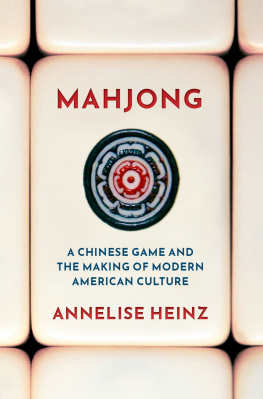
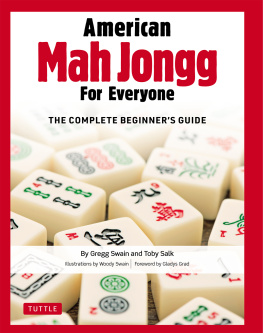
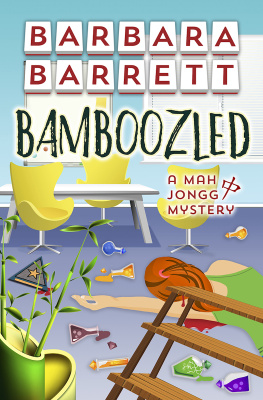
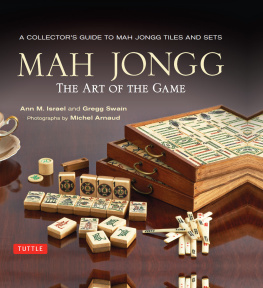

 APPENDIX
APPENDIX 



 The Symbols of the Set
The Symbols of the Set